No products in the cart.
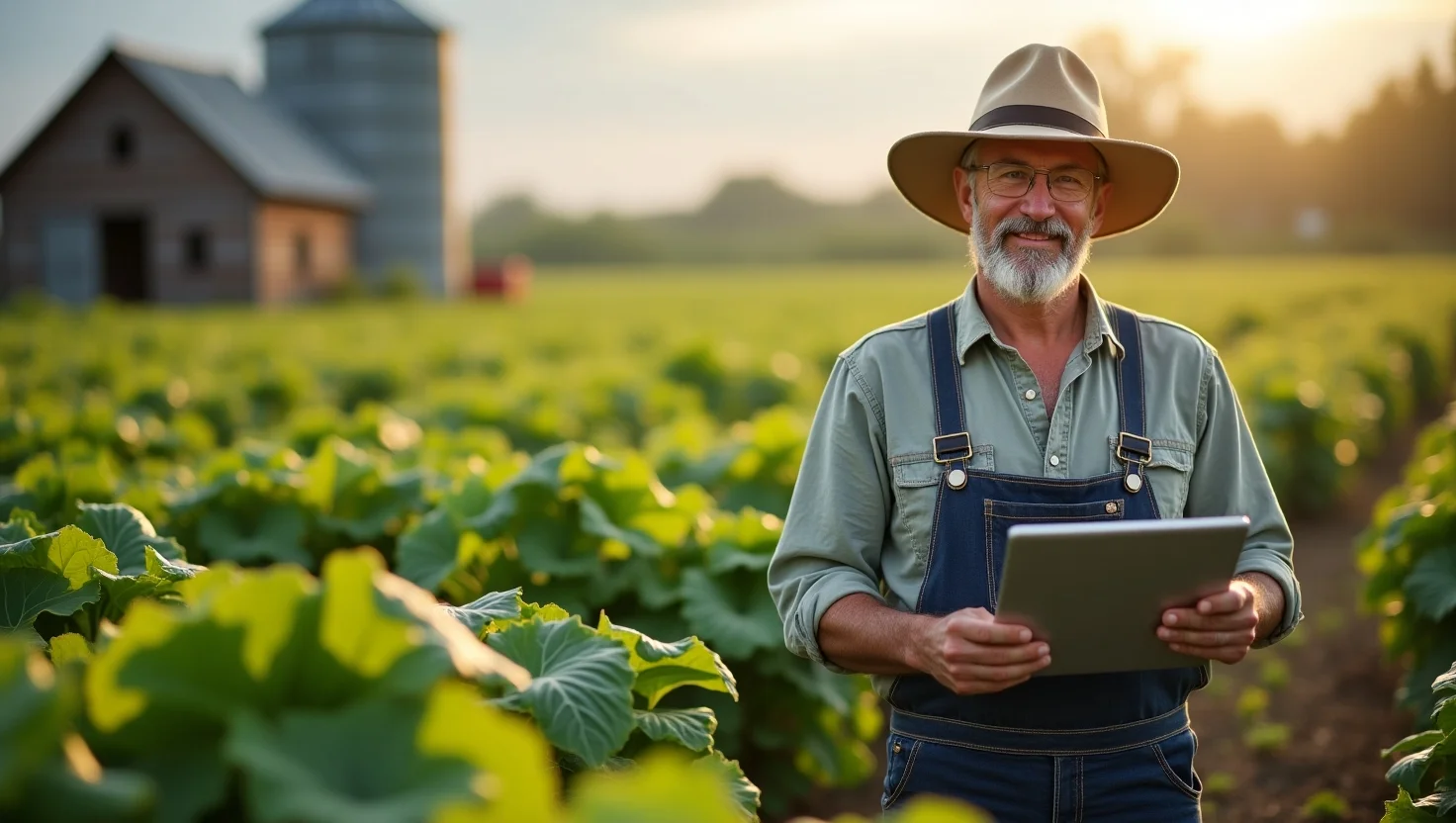
1. Introduction:
Across the United States, farmers are confronting a growing list of challenges, including erratic weather, labor shortages, rising operational costs, and mounting pressure to produce more food on less land. Traditional farming methods, though time-tested, are proving inadequate in addressing these evolving demands. In response, a growing number of farmers are turning to AI in agriculture to unlock new levels of efficiency and productivity.
At the heart of this shift is the pursuit of better yields, and artificial intelligence is delivering. From precision farming techniques that tailor seeding and fertilization to specific soil conditions, to smart irrigation systems that conserve water while boosting output, agricultural technology is transforming how farmers work the land. These AI-powered tools aren’t just about automation, they’re about making farming more data-driven, sustainable, and profitable.
But this revolution isn’t just happening on large-scale industrial farms. Small and mid-sized farms across the Midwest, South, and beyond are adopting smart agriculture solutions, drawn by the promise of actionable insights and long-term ROI.
As AI continues to evolve, so too does its role in reshaping U.S. agriculture. This article explores why more farmers are embracing AI, the technologies leading the way, and how this digital transformation is helping farmers grow smarter, not just bigger.
2. The Agricultural Crisis in the U.S.
Farming in the United States has always been a demanding profession, but in recent years, the stakes have grown even higher. Many farmers are feeling squeezed by a perfect storm of challenges, declining crop yields, worsening weather patterns, rising input costs, and unpredictable market prices. These issues aren’t just inconveniences; they pose real threats to the livelihood of farmers and the security of the nation’s food supply.
U.S. farming problems have intensified with climate variability. Extended droughts in the West, heavier rainfall in the Midwest, and shifting growing seasons across the South are complicating planting and harvesting schedules. This climate impact on farming is leading to inconsistent yields and increasing the risk of crop failure.
On top of environmental challenges, farming inefficiencies persist in areas like resource allocation, pest management, and labor. Many farmers are still relying on outdated equipment and manual tracking systems that can’t keep up with the scale and speed today’s agricultural demands require. Without real-time insights or predictive tools, decisions are often based on experience and gut instinct, an approach that no longer guarantees success.
The result? A farming industry in need of innovation. The demand for sustainable agriculture is growing, but without modern tools, many farmers are struggling to meet environmental and economic goals. That’s where AI-powered solutions come into play, offering real-time data, automation, and insights that help farmers adapt, improve yields, and reduce waste.
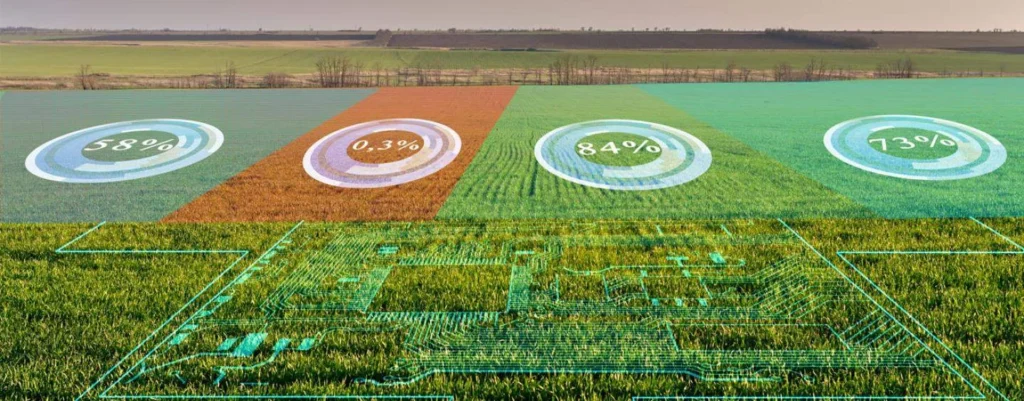
3. What is AI in Agriculture?
At its core, AI in agriculture refers to the use of artificial intelligence technologies, such as machine learning, computer vision, and data analytics, to improve decision-making, automate processes, and increase efficiency across farming operations. Far from being a futuristic concept, this innovation is already reshaping the way U.S. farms grow, manage, and harvest crops.
Agriculture technology powered by AI is enabling farmers to make smarter choices by analyzing massive volumes of data, from weather forecasts and soil conditions to crop health and pest patterns. With machine learning in farming, systems can detect patterns and predict outcomes with impressive accuracy, helping farmers prevent problems before they occur.
Popular AI tools for farmers include autonomous tractors, drones with multispectral imaging, smart sensors for soil monitoring, and platforms that offer precision recommendations on irrigation, fertilization, and planting schedules. These smart farming solutions not only streamline labor but also reduce resource waste, contributing to more sustainable and profitable farming.
Even traditional family farms are now exploring AI-driven agriculture to stay competitive. With the rise of affordable, user-friendly platforms, advanced tech is no longer exclusive to corporate megafarms. These tools are leveling the playing field, allowing small and mid-sized operations to thrive in a data-driven era.
AI in agriculture isn’t about replacing farmers, it’s about empowering them with deeper insights and greater control over their operations. As the next sections will show, these innovations are directly contributing to better yields and stronger farm economies.
4. How AI Improves Yields: 5 Real Use Cases
The promise of AI in agriculture isn’t just theoretical, it’s already delivering measurable results across U.S. farms. From planting to harvesting, artificial intelligence is helping farmers optimize every step of the process. Here are five real-world applications where AI is driving better crop yields and transforming farm operations.
4.1 Precision Seeding and Fertilization
Using soil sensors and satellite imagery, precision farming tools recommend exactly where and how much to plant. This reduces waste and ensures crops get the nutrients they need, right when they need them.
4.2 AI-Based Pest Detection
With the help of computer vision and real-time data, farmers can identify pest infestations early. AI-based pest control minimizes the overuse of pesticides and protects yields from damage.
4.3 Smart Irrigation Systems
Water efficiency is critical. Smart irrigation tools powered by AI analyze weather forecasts, soil moisture, and crop needs to deliver water precisely when and where it’s needed. This reduces runoff and boosts productivity.
4.4 Drone Technology in Farming
AI-enabled agricultural drones capture high-resolution images to assess plant health, detect disease, and map crop stress zones. These insights help in timely interventions and reduce crop loss.
4.5 AI Crop Prediction Models
AI crop prediction platforms use historical data and climate models to forecast yield potential. This helps with harvest planning, inventory management, and market decisions.
Together, these tools not only enhance output but also promote more sustainable farming practices, positioning AI as a game-changer in modern agriculture.
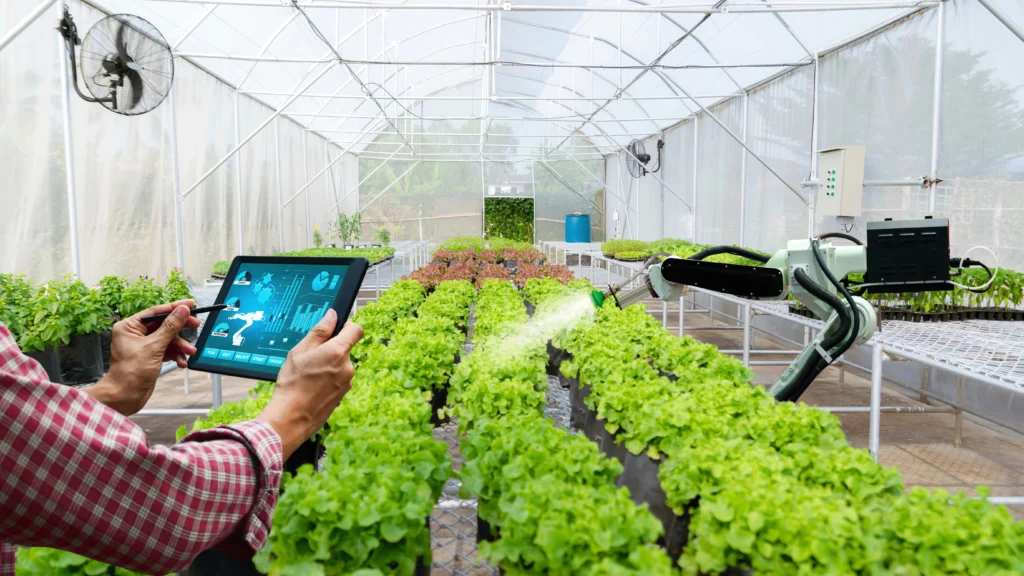
5. Economic Impact: ROI and Accessibility
While advanced technology often raises concerns about affordability, many U.S. farmers are discovering that AI in farming can offer a strong return on investment. From labor savings to yield improvements, AI-powered solutions are proving their value, not just for large operations, but also for small and mid-sized farms.
The initial cost of AI in farming depends on the tools adopted. Some farmers invest in smart drones or autonomous tractors, while others begin with budget-friendly platforms for crop monitoring or AI-based irrigation. Regardless of entry point, studies and real-world cases show that ROI in smart farming typically comes within one to three growing seasons.
For smallholders and new adopters, the rise of AI farming tools for beginners, often subscription-based or modular, makes the technology more accessible than ever. Cloud-based platforms allow farmers to pay only for the features they need, while mobile apps provide intuitive interfaces that require minimal training.
AI’s economic benefits extend beyond increased yields. By reducing water, fertilizer, pesticide, and fuel use, agricultural profitability improves across the board. Additionally, better planning and predictive insights help farmers align production with market demand, minimizing waste and maximizing profits.
Importantly, the AI adoption by small farms is accelerating, fueled by educational support, cooperative networks, and government-backed innovation grants. This democratization of technology ensures that even resource-constrained farmers can benefit from the digital revolution.
With costs decreasing and performance increasing, AI is no longer a luxury, it’s quickly becoming a necessity in modern agriculture.
6. Challenges and Considerations
Despite the promise of AI in farming, its widespread adoption doesn’t come without hurdles. While many U.S. farmers are seeing real results, there are still critical challenges and considerations that must be addressed for long-term success and sustainability.
One of the primary barriers to AI adoption is cost and accessibility, especially for small, independently run farms. While tools are becoming more affordable, the upfront investment and need for training can deter farmers who lack technical support or financial resources.
Another concern is rural connectivity issues. Many AI tools require strong internet access for real-time data uploads and cloud-based analytics. Unfortunately, rural areas across the U.S. often struggle with limited broadband infrastructure, limiting the effectiveness of even the most advanced platforms.
On the technology side, AI limitations in farming include challenges with data accuracy and system reliability. For example, predictive models may not always account for sudden weather shifts or pest outbreaks, leading to flawed recommendations if not continuously updated with local inputs.
Data privacy in agriculture is also emerging as a key issue. As farms become more digitized, concerns grow over who owns the data, how it’s used, and whether it could be exploited by third-party vendors or large agritech companies.
Finally, there are ethical concerns in agricultural AI, such as automation displacing jobs or widening the gap between large and small-scale producers. As AI continues to evolve, addressing these challenges will be vital to ensure that the benefits are equitable and sustainable.
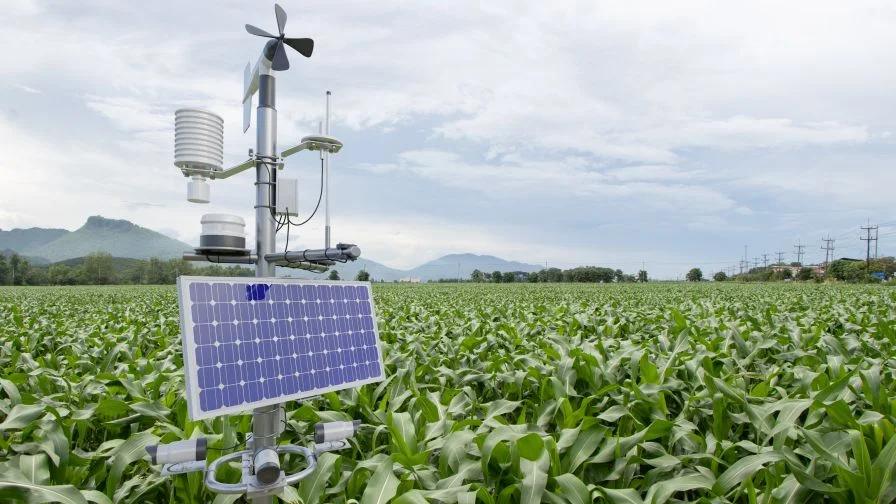
7. The Future of AI in U.S. Agriculture
The role of AI in agriculture is just beginning to unfold. As technology matures and adoption grows, the future of farming technology is poised to revolutionize how food is grown, managed, and distributed across the United States. Farmers who embrace this transformation today will likely become the most competitive and resilient producers of tomorrow.
Emerging AI trends in agriculture point toward more autonomous systems, deeper integration of robotics, and AI-powered platforms that manage entire farms from soil to sale. For instance, next-generation equipment will combine sensors, GPS, and machine learning to support AI in precision agriculture, allowing farmers to adjust planting, watering, and harvesting strategies on the fly.
We’re also seeing a wave of sustainable farming innovations driven by AI. These include carbon tracking tools that help measure and reduce emissions, as well as AI-assisted regenerative farming practices that improve soil health and biodiversity. These advancements not only promise higher yields but also align with global goals for environmentally conscious agriculture.
Next-gen farming tools are becoming smarter and more accessible, from self-driving tractors to AI-based farm management apps. As rural broadband improves and the cost of hardware drops, farmers of all sizes will have better access to tools that boost efficiency and profitability.
Ultimately, AI won’t replace the farmer, it will empower them. The future lies in a harmonious blend of human intuition and machine intelligence, driving a new era of productivity, sustainability, and food security in U.S. agriculture.
8. Conclusion: A New Era of Farming
The American farming landscape is undergoing a dramatic transformation. Faced with rising challenges, climate volatility, labor shortages, and pressure for sustainability, U.S. farmers are increasingly turning to artificial intelligence as a solution. This shift marks the beginning of a new era of farming, where data-driven insights and automation redefine how agriculture operates.
From real-time crop monitoring to smart irrigation and predictive analytics, digital farming solutions are helping farmers make faster, more informed decisions. The result isn’t just higher yields; it’s better resource management, lower costs, and more sustainable practices. Whether it’s large agribusinesses or small family farms, those embracing the smart agriculture movement are already seeing measurable gains.
Yet, the transition isn’t without its growing pains. Infrastructure gaps, affordability, and data privacy must be addressed to ensure equitable access to these powerful tools. Still, the direction is clear: AI is not a passing trend, it’s becoming essential to modern farming success.
For farmers aiming to stay competitive in a rapidly changing world, adopting future-ready farming strategies powered by AI is no longer optional; it’s strategic. As technology becomes more accessible, the benefits of AI for farmers will only grow, leveling the playing field and opening up new opportunities.
Ultimately, AI is transforming agriculture into a smarter, more resilient industry, one that’s ready to feed the future with efficiency, precision, and care.
FAQs:
Q1. How is AI helping U.S. farmers increase crop yields?
AI helps U.S. farmers boost crop yields through precision farming, smart irrigation, pest detection, and predictive analytics. These AI tools allow farmers to make data-driven decisions that optimize resources and improve productivity.
Q2. What are the most popular AI tools used in U.S. agriculture?
Common AI tools in U.S. agriculture include smart drones, automated tractors, AI-based soil sensors, and crop monitoring platforms. These tools support precision agriculture and improve farm management efficiency.
Q3. Is AI in farming affordable for small U.S. farms?
Yes, many AI farming tools for beginners and small farms are now available through subscription-based or modular pricing. These cost-effective solutions help smaller operations benefit from AI without heavy investment.
Q4. What challenges do U.S. farmers face when adopting AI technology?
U.S. farmers face challenges like rural internet connectivity, high initial costs, limited training, and concerns over data privacy. Addressing these issues is key to wider AI adoption in agriculture.
Q5. What is the future of AI in American agriculture?
The future of AI in U.S. farming includes more autonomous equipment, AI-driven sustainability tools, and broader access to smart farming solutions. These innovations aim to improve yields, reduce costs, and support sustainable agriculture.
Related Articles
Soil & Water Management
How AI Can Help Young Farmers Succeed in U.S. Agriculture
1. Introduction: Farming in the United States is at a crossroads. With...
Soil & Water Management
AI and Sustainable Farming: Can Technology Save the Planet?
1. Introduction: Can the very industry that feeds the world also be...
Soil & Water Management
AI for Seed Selection: Choosing the Right Crops for Maximum Yield
1. Introduction: Every successful harvest begins with one critical decision, choosing the...
Soil & Water Management
AI in Soil Health: How Smart Tech is Improving Crop Productivity
1. Introduction: Healthy soil is the foundation of a productive farm, but...
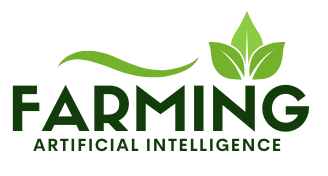

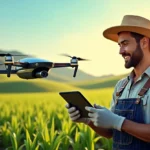
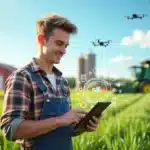

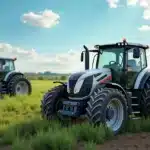

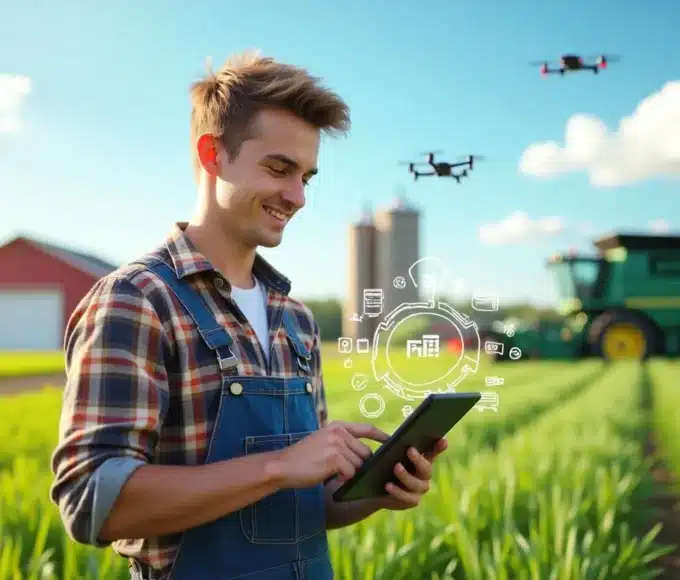
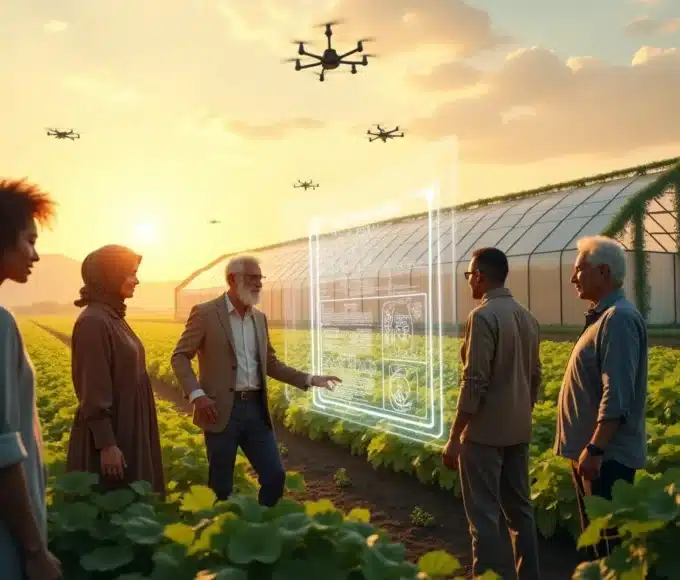
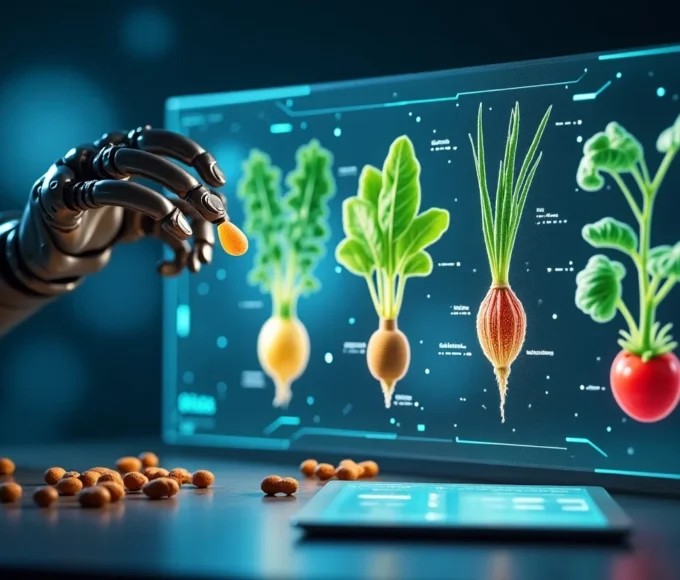
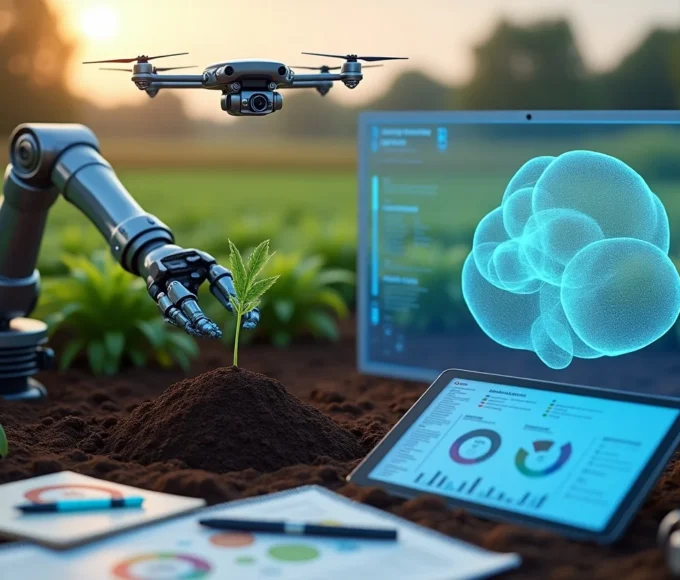
Leave a comment